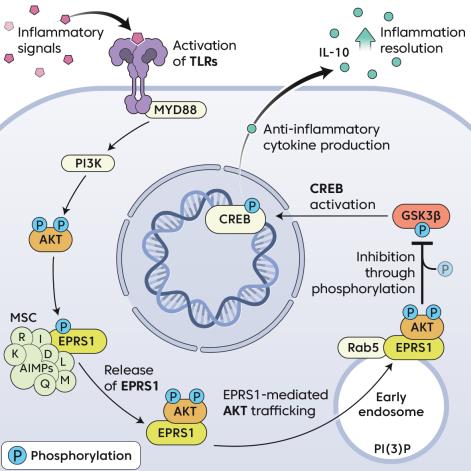Used in the development of technology for the diagnosis and treatment of inflammatory diseases
[한국생명공학연구원 제공. 재판매 및 DB 금지]
(Daejeon = Yonhap News) Reporter Kim Joon-ho = The research team led by Dr. Kim Myung-hee at the Microbiome Convergence Research Center at the Korea Research Institute of Bioscience and Biotechnology announced on the 14th that it has identified the principle of relief inflammation of the protein synthesis enzyme ‘EPRS1’.
Inflammation is a complex immune response that occurs as a defense mechanism when biological tissues are damaged or infected.
The research team found that EPRS1, which protects against viral infections, relieves inflammation and maintains immune homeostasis by regulating a specific signal transduction system in the inflammatory environment of the human body, such as a pathogenic bacterial infection or disease intestinal inflammation.
When EPRS1 protein is exposed to an inflammatory environment, it activates “AKT” protein, which plays an important role in signal transduction to suppress inflammation, and secretes “IL-10” protein, an anti-inflammatory cytokine (an immune protein relatively small amount secreted by immune cells) that it promotes
The research team confirmed through experiments that when mice lacking EPRS1 suffer from sepsis and inflammatory bowel disease, their anti-inflammatory immune function decreases, resulting in a lower than normal survival rate.
Dr. Myung-Hee Kim said, “This demonstrates that enzyme complexes present in all cells in a constant standby state not only synthesize proteins, but also function as homeostasis mediators that regulate the body’s immune environment.” . .
The research results were published online on the 29th of last month in the international journal Nature Communications.
Report via KakaoTalk okjebo
<저작권자(c) 연합뉴스,
Unauthorized reproduction – redistribution prohibited>
11/14/2022 12:00 Sent


